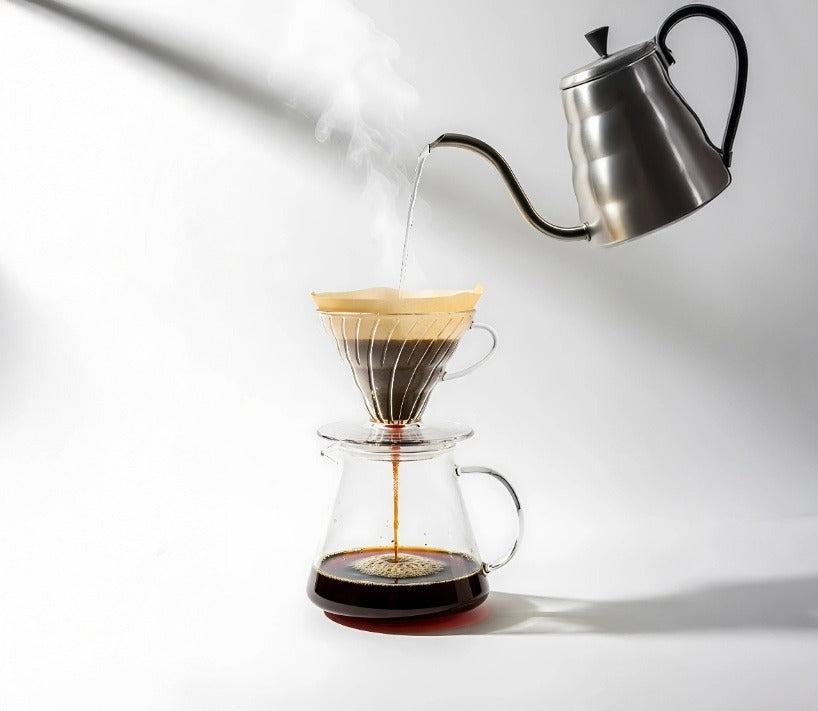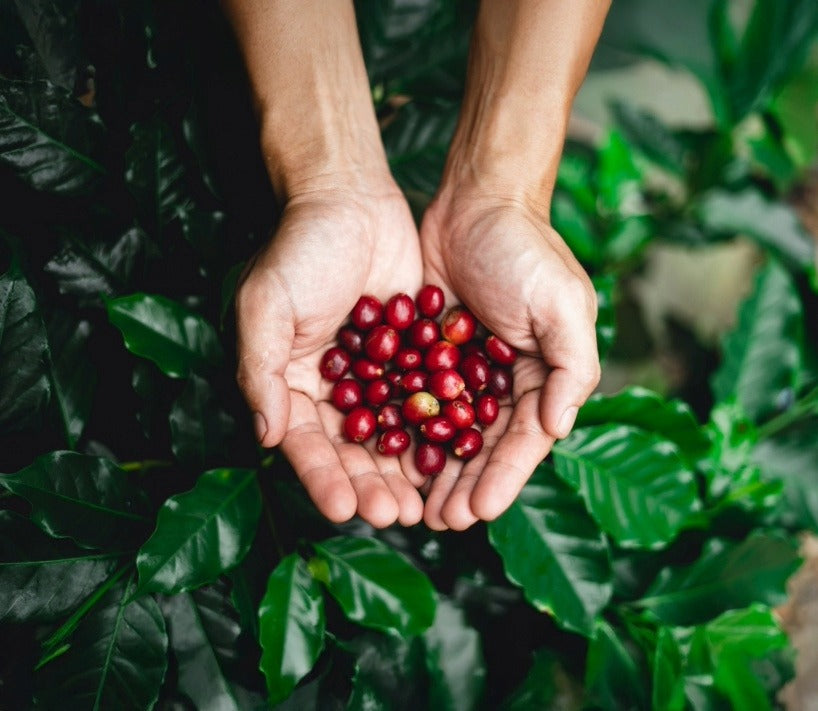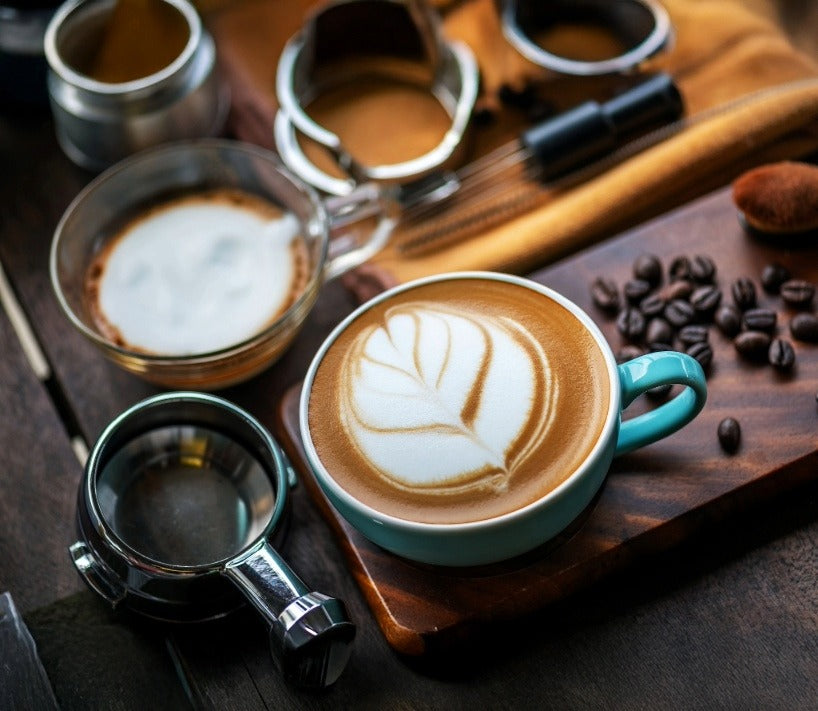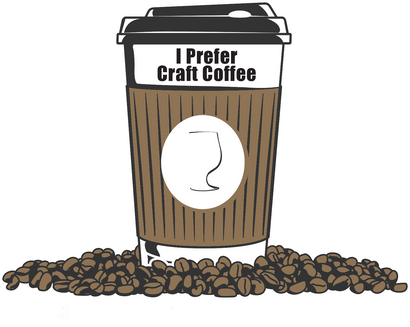Freshest Craft Coffee Online: Why Is Coffee Bitter (and How to Keep the Flavor, Not the Grimace)
July 07, 2025 4 min read
Freshest Craft Coffee Online: Why Is Coffee Bitter (and How to Keep the Flavor, Not the Grimace)
“Wait—coffee should taste like chocolate-dipped hope, not aspirin water. Why does my cup bite back?”
If you’ve ever launched a sip across the kitchen counter in self-defense, you’ve tasted the wrong kind of bitter. Today we’re diving deep—beans first—into the chemistry of bitterness, why some cups pucker your cheeks with astringency, and how to coax out the balanced bite that makes coffee…well, coffee.
Coffee Talk: Is your coffee bitter?
Are you blaming coffee for being bitter when it’s really your brew habits holding the grudge?
I roast for a living and still wreck a mug now and then. (Confession: even pros mis-time a pour-over before 6 a.m.) But once you understand which bitter is natural and which is the evil twin, you can sip happily ever after—whether you brew the best craft coffee at home or order from the best coffee bean delivery service.
1. Coffee Is Born Bitter—But Not That Bitter
-
Caffeine itself tastes bitter—your body’s “hey, that might be poison” alarm.
-
Chlorogenic acids break down during roasting into lactones (pleasantly bitter) and phenylindanes (harshly bitter).
-
Freshness matters: staling flips tasty compounds into acrid ones—why the freshest craft coffee online always beats supermarket shelf-sitters.
2. Astringent vs. Pleasant Bitterness
Astringent bitterness dries your tongue; pleasant bitterness balances sweetness. Think 90% cocoa chocolate vs. chewing aspirin.
| Variable | Pleasant Bitterness | Astringent Bitterness |
|---|---|---|
| Roast Level | Medium-dark caramelizes sugars; bittersweet like dark chocolate | Over-roasted oils oxidize: burnt-rubber notes |
| Grind Size | Even medium-fine extracts flavor evenly | Too fine = over-extraction, sludge, dryness |
| Brew Temp | 195-205 °F dissolves tasty solids | >205 °F scorches grounds, boosts phenylindanes |
| Time (Extraction) | 2–4 min (drip/immersion) hits the sweet spot | 5 + min leaches tannins: pucker-town |
| Water Quality | Balanced minerals aid sweetness | Very soft or hard water distorts extraction |
3. Why Your Cup Gets Bitter at Different Moments
| Sip Moment | What You Taste | Why It Happens |
|---|---|---|
| First Sip | Aromatics & mild sweet-bitter | Volatile compounds arrive first |
| Mid-Cup | Balanced bittersweet | Lactones dominate as coffee cools |
| Final Lukewarm Gulp | Spike of astringency | Acids oxidize, oils separate |
Pro tip: If the finish reminds you of licking a nine-volt battery, toss what’s left and start over.
4. Extraction Math (But Funnier)
-
Coffee = flavor fractal.
-
Under-extract (<18%): sour, thin.
-
Sweet Spot (18–22%): balanced; the top specialty coffee online hits here out of the bag.
-
Over-extract (>22%): harsh, dry—like making small talk with a printer tech.
The Take-It-Home Fixes
-
Use Fresh Beans (← easiest win).
Stale beans gift-wrap phenylindanes. Opt for the freshest craft coffee online or a best coffee subscription online that roasts to order. -
Mind the Grind.
Burr grinder > blade. Adjust until your brew runs 2:30–4 minutes for drip, 25–30 seconds for espresso. -
Check Water Temp.
If you don’t own a kettle with numbers, wait 30 seconds after boil. (Yes, I count “one Mississippi” like a kindergarten teacher.) -
Tweak the Ratio.
Start 1:16 (1 g coffee : 16 g water). Bitter cup? Coarser grind or shorter brew. Flat cup? Finer grind or longer brew. -
Control Contact Time.
French press folks: plunge at 4 minutes, not “whenever my Zoom meeting ends.” -
Mind Roast Freshness, Not Just Roast Color.
Dark isn’t always bad—but a dark roast roasted yesterday will taste miles cleaner than a medium roast roasted last quarter and marketed as the best coffee to buy online. -
Use Filtered Water.
Minerals matter: aim 50–150 ppm TDS so extraction chemistry behaves.
Quick-Glance Comparison Table: Brew Methods vs. Bitterness Risk
| Brew Method | Bitterness Risk | Why | How to Fix |
|---|---|---|---|
| Espresso | High (pressurized extraction) | Tiny grind, 9 bar pressure | Dial in grind; lower brew temp to 198 °F |
| French Press | Medium-High | Long immersion & sediment | Plunge earlier; use a cloth filter |
| Pour-Over | Medium | Human error in pouring | Keep steady flow; stir bloom |
| AeroPress | Low-Medium | Short brew but fine grind | Use metal filter for more oils |
| Cold Brew | Low | Cold water extracts fewer phenylindanes | Steep 12-16 h, filter twice |
FAQ (Because Google Eats These for Breakfast)
Why does my coffee taste bitter even with light roasts?
Likely over-extraction: grind too fine, water too hot, or brew too long. Light roasts have more acids—overdoing them adds astringency fast.
Does a darker roast automatically mean more bitterness?
Not always. A fresh dark roast can be pleasantly bittersweet. An old dark roast tastes like fireplace scrapings.
Can I add salt to reduce bitterness?
A pinch can suppress bitter receptors, but it masks rather than solves. Fix grind, temp, or bean freshness first.
Is bitterness linked to caffeine content?
Partly. Caffeine is naturally bitter, but it’s only one piece; chlorogenic breakdown products influence taste more.
How fast do beans go stale?
Whole beans lose vibrance within 2–4 weeks post-roast. Ground coffee stales in minutes. That’s why ordering from the best coffee online free shipping roaster who ships same-day is worth it.
Wrap-Up (Your Reward, Final 60 Seconds)
Bitterness isn’t coffee’s villain; it’s the plot twist that makes the story interesting—if you manage it. Brew with fresh beans, right-sized grind, correct water temperature, and dialed-in time, and you’ll taste balanced bittersweet notes that complement chocolate, fruit, or caramel undertones. Skip those steps and you’ll brew dirty penny water faster than you can say best coffee subscription online.
So the next time your mug sneers at you, remember: the bean did its part. Now it’s your turn to brew like you mean it—and sip without the grimace.
Also in Best Coffee To Buy Online Education

Biggest Mistake With Pourover Coffee: It's Your Beans
January 02, 2026 3 min read
Learn how to brew the best pourover coffee at home with the best tasting craft coffee online. Remember, the best coffee to drink at home starts with the freshest craft coffee online, not the bargain bin beans at your local supermarket.

Specialty Roast Coffee Beans Online: What’s the Deal, Really?
January 01, 2026 4 min read
You'll learn what specialty roast coffee beans online actually means, and why it translates to the best tasting craft coffee at home.

High-Score Coffee Beans Online: Why 85+ Points Actually Matter
December 31, 2025 3 min read
Learn why the best tasting craft coffee online is high-scoring specialty coffee that tastes better and how to choose the right beans online. Order coffee online from a roaster you trust.
